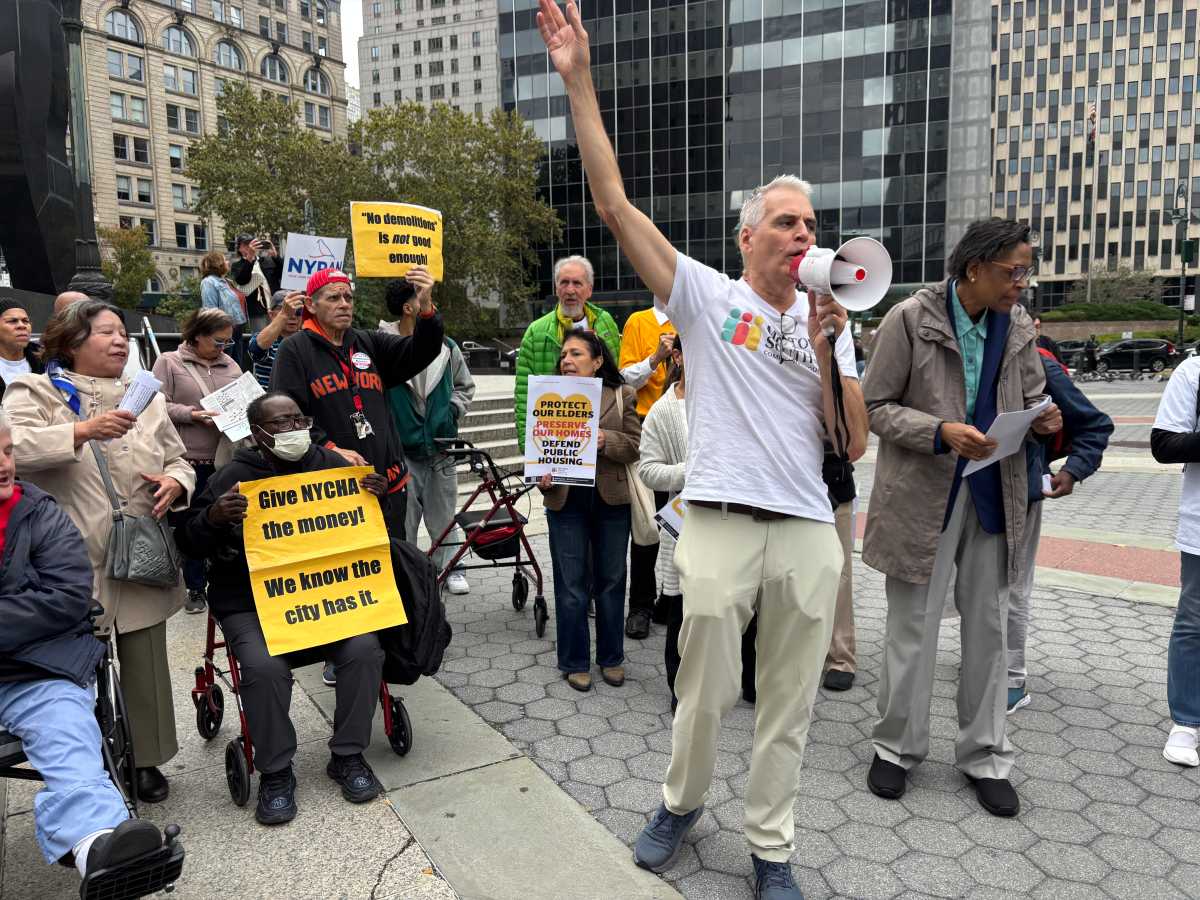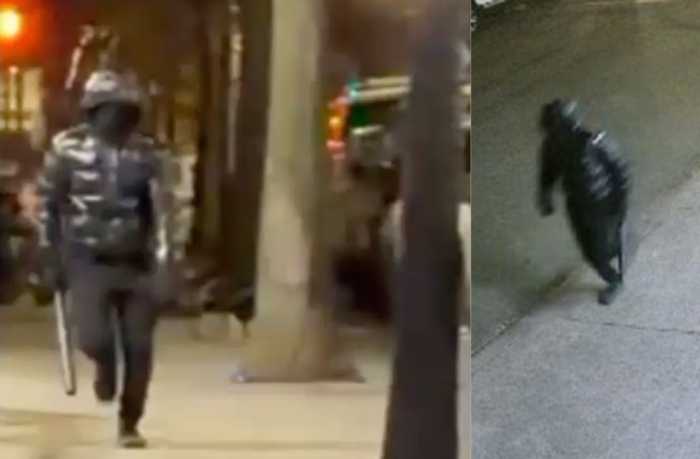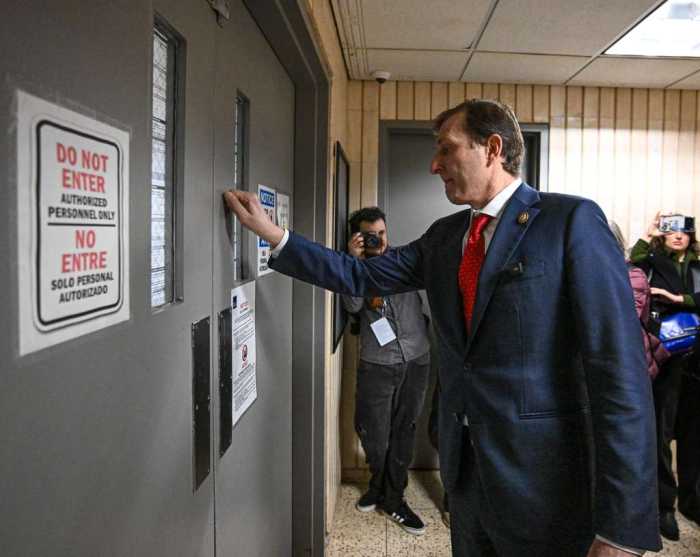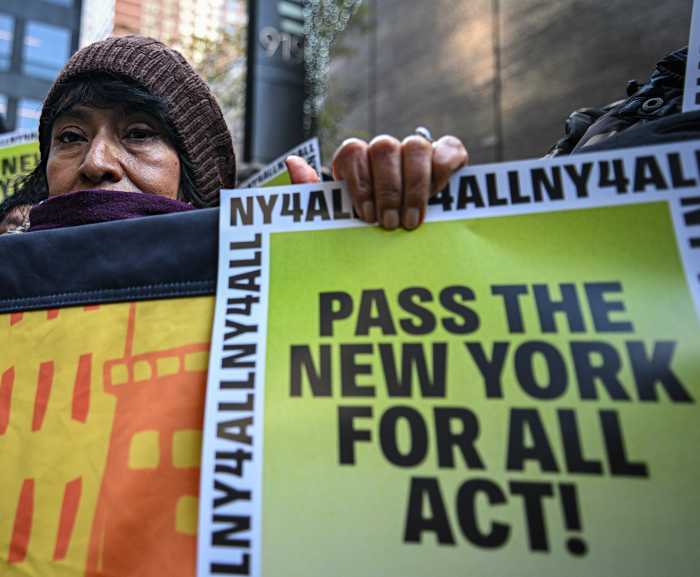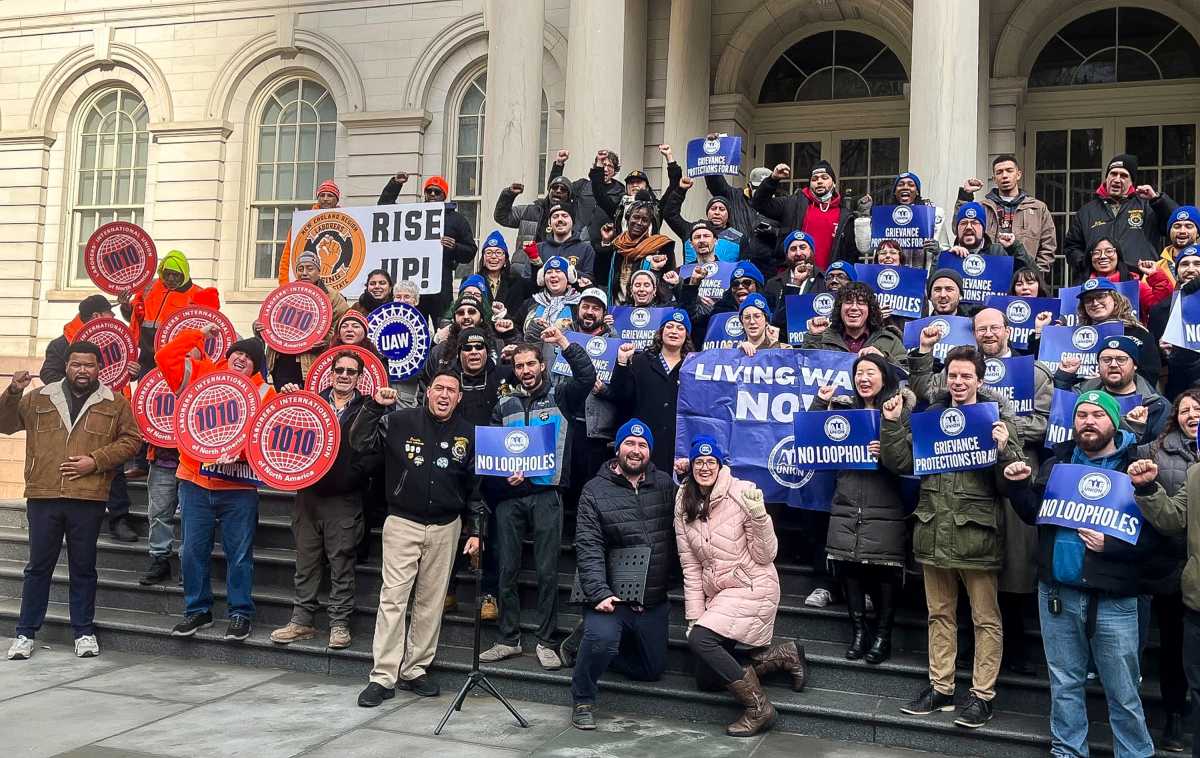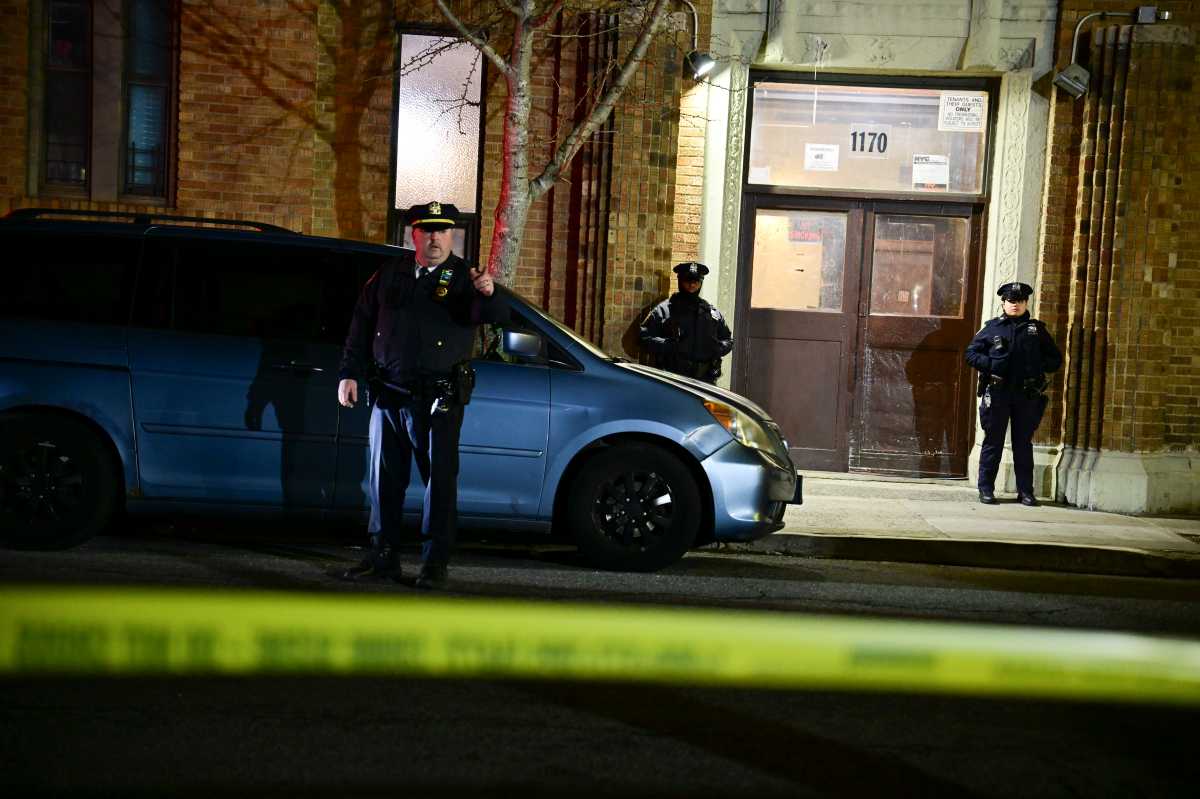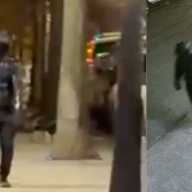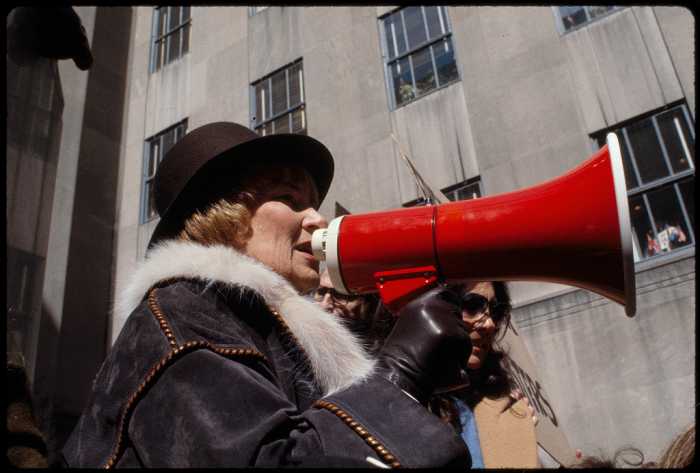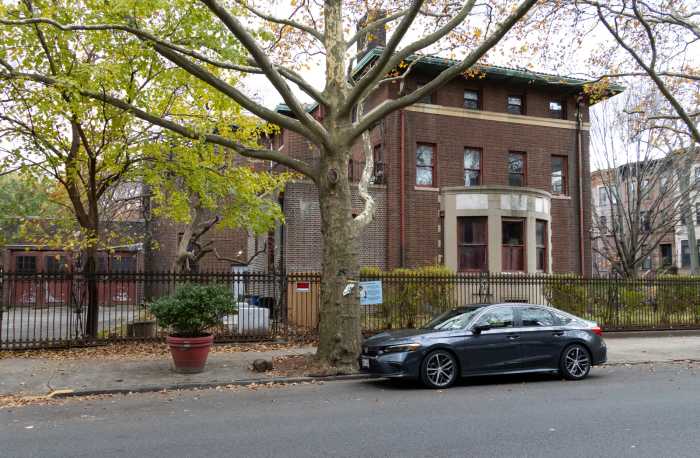A judge on Wednesday said he likely will deny a requested injunction opposing the demolition of Fulton, Elliott-Chelsea housing, not based on arguments, but because it relies heavily on generative AI that cites cases that do not exist.
Judge James D’Auguste shocked a crowded courtroom when he said he expects to dismiss the Article 78 proceeding, initially submitted pro se, without attorneys, with prejudice against those who filed it.
Residents of the Fulton, Elliott-Chelsea NYCHA housing are seeking to block their removal amid a plan to demolish and rebuild on that site.
The case, known as Weaver v NYCHA, argues that NYCHA and the New York City government disregarded Uniform Land Use Review Procedures.
Residents just before the hearing, wearing T-shirts saying “Save Public Housing” and chanting “No Demolition,” rallied in English, Spanish, and Chinese.
“Relocation is tantamount to eviction,” Chelsea activist Marni Halasa said. “Once seniors move, they may not able to come back in the same building.”
She said some might die due to the disruption, while those at the rally said the stress of displacement was unhealthy and dangerous.
“Nothing is really set in stone. Just because the developer promises you’ll come back in one year or three years, you can’t trust the developers,” Halasa said. “In privatization and demolition projects, they change all the time. At the end of the day, you don’t really know.”
But just minutes later, at the New York County Court House, 60 Centre St., Judge D’Auguste instead demolished the brief, which attorneys said was submitted using Grok AI, as so flawed as to be impossible to sustain, while the NYCHA and the city’s case were well-documented.
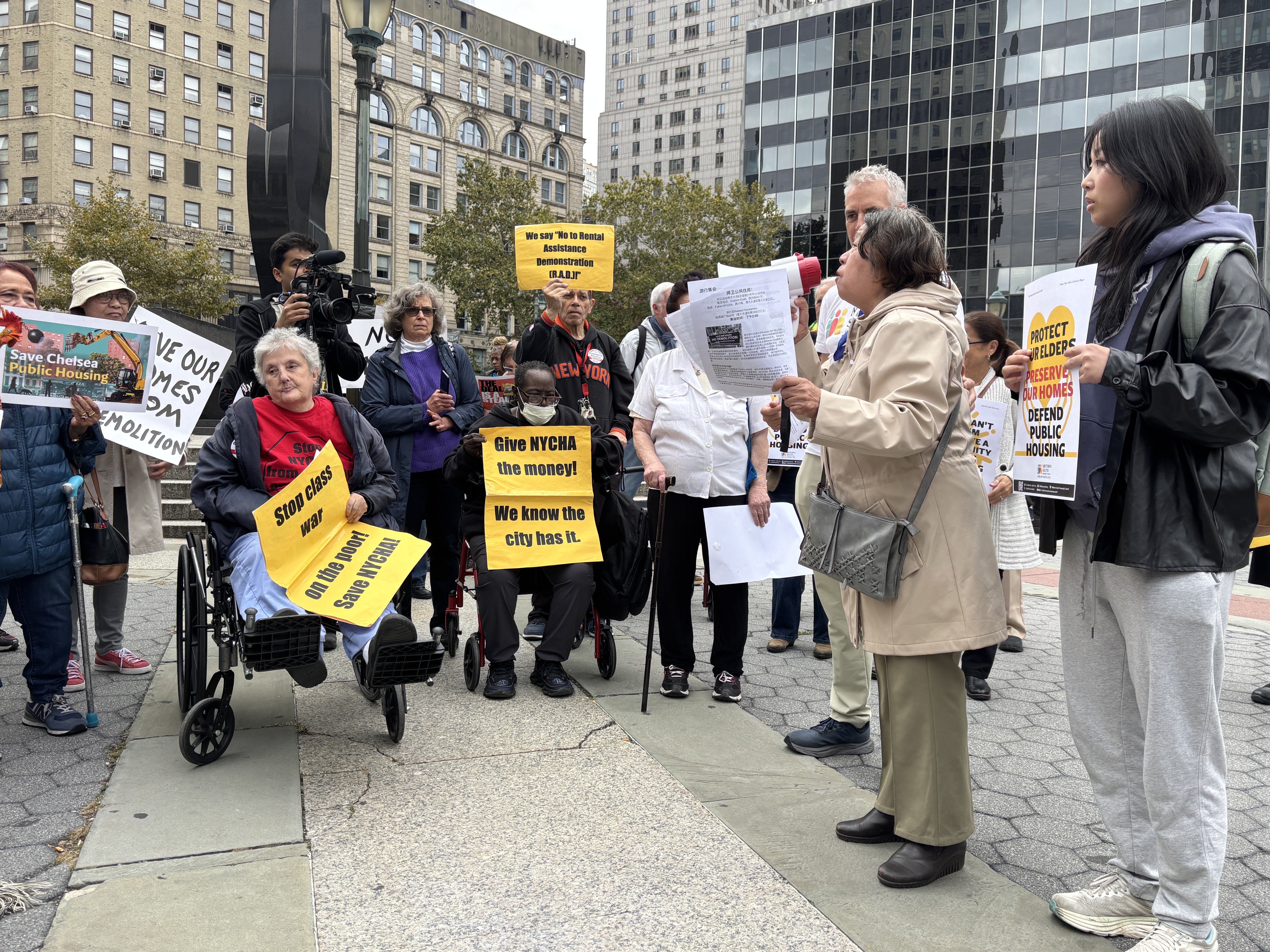
“It would be one thing if you came to me and said, ‘We put in our briefs and they put in their papers and there are some new arguments,’ but this is different,” D’Auguste told the packed courtroom. “What’s different about this is that the applicants built a case on flimsy material. It’s built on an AI-generated submission.”
Judge D’Auguste said using AI to research and build a case can easily lead to sanctions and situations like this.
“The petitioners’ arguments appeared to be the result of generative AI,” he said. “They cited two cases that do not exist, cases that when they do exist don’t stand for the positions for which they were cited. How is it you can meet a burden of a preliminary injunction when the application is so faulty?”
Attorneys now on board attributed the AI slip-up to the fact that the case was submitted by plaintiffs who are not attorneys.
“These were pro se petitions not versed in AI or legal practice,” said John Low-Beer, now helping lead the effort to block NYCHA from demolishing the Fulton and Elliott-Chelsea Houses.
Thomas Hillgardner, co-counsel, also said AI was an element but not used by the non-attorney plaintiffs to craft the entire case.
“I wouldn’t say that the brief is AI-generated,” Hilgardner said. “There are some cases in the brief that rely on AI.”
Judge D’Auguste suggested those who filed an amicus brief, prepared by TakRoot Justice staff attorney Paula Segal on behalf of the Elliot Chelsea Houses Resident Association and Fulton Elliot Chelsea Tenants Against Demolition, could file a new case.
“We have no issues doing that. That seems like the direction we’ll be going into soon,” Omega Linton, a Chelsea Fulton resident, said of filing. “We have some of the same stakes. Our briefing is legitimate.”
Segal, in her amicus brief, argues that NYCHA “lacks authority to proceed with the proposal” and requires approval from the City Planning Commission and the City Council.
She argues the proposal, which includes developing thousands of market-rate units, “would be in violation of NYCHA’s statutory mandate to build low-income housing.”
Judge D’Auguste, at a hearing that turned into a lesson in AI’s limits in law, praised the amicus brief, but said the initial filings did not meet legal standards.
“How is it fair to everyone else in this room, when people want a decision on the law, when I’m going to make a decision on one side’s papers because the other side’s paper is garbage?” Judge D’Auguste asked.
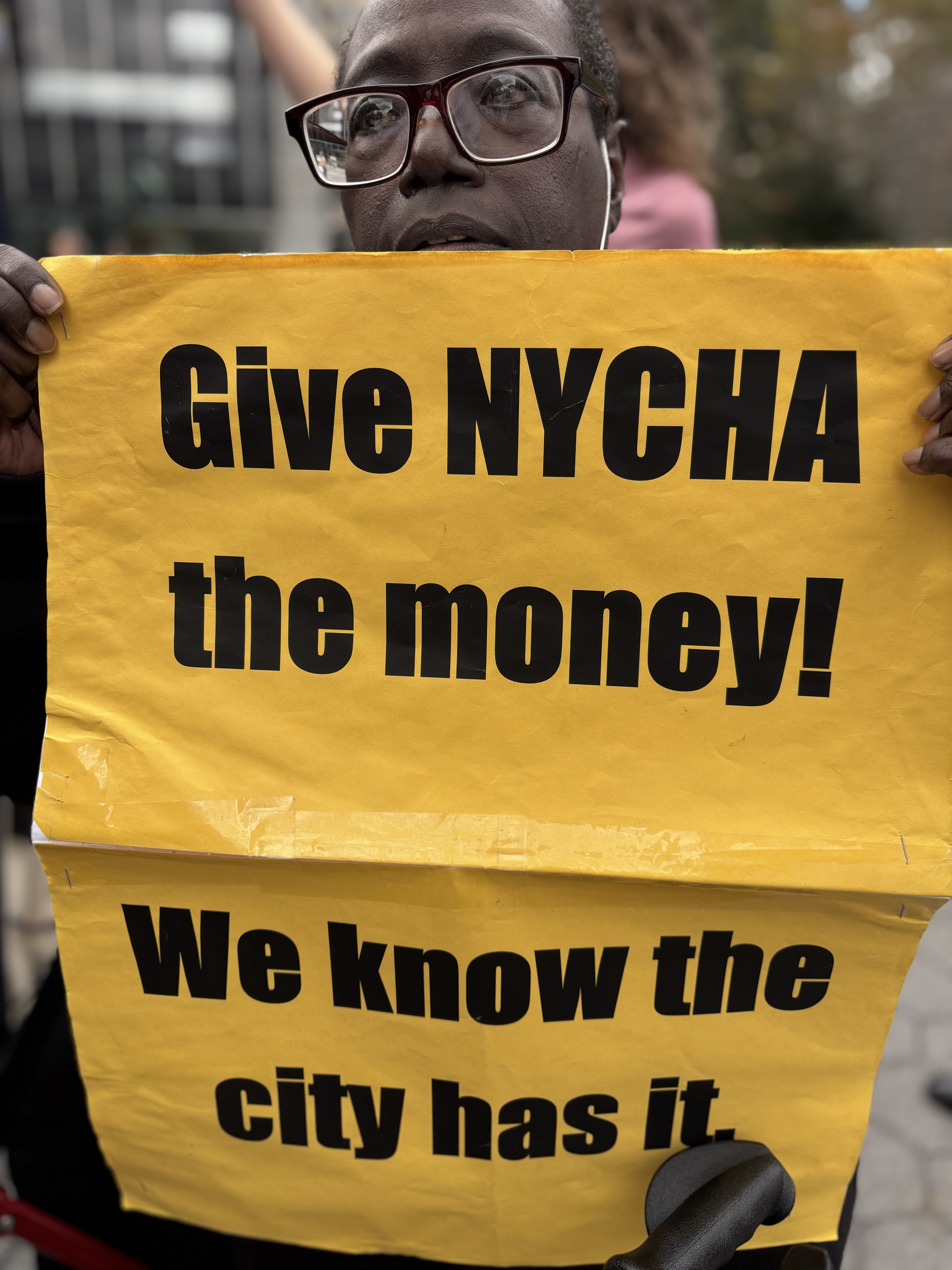
He called the case frivolous in that it wasted the court’s time by not presenting substantiated arguments sourced to legal proceedings and principles.
“You’re attempting to build the house after it’s already five stories,” the judge said of efforts to bolster initial arguments. “Well, stories 6 through 12 are well built, even though stories one to six are poorly built.”
Judge D’Auguste said he might seek for any other case regarding the issue to be heard by another judge, to avoid any concern of prejudice if he dismisses the first.
“They want a merit-based decision,” he said. “They don’t want to lose, because the case was dismissed.”
Hilgardner said those who submitted were “unfamiliar with the dangers of using AI,” adding, “I guess they understand now how serious a mishap can be relying on AI.”
Many at a rally outside the courthouse supported efforts to save the housing, which could lead to eviction proceedings beginning as soon as October 26.
“We’re against privatization,” Dr. Jessie Fields, who opposes demolition, said at the rally. “How can they displace people? We’re standing strong like a tree standing by the water. The residents of Fulton and Elliott-Chelsea will not be moved.”
Republican mayoral candidate Curtis Sliwa expressed support for tenants who want to remain in their homes rather than face relocation.
“I’m opposed to demolition of public housing and buildings that are landmarked,” Sliwa said. “The tenants should stay in their apartments.”
Low-Beer said it’s important that any new case or refiling not be dismissed on a technicality due to a time frame initiated by the first case.
“We would want to make sure, if this case were refiled, it wouldn’t be for some reason time-barred,” he said.
While this may soon mark the end of one cases, others saw it as a potential new and better beginning where the merits would be heard. “All is not lost,” Halasa said. “So that’s good.”
Others said that they want the buildings renovated, per the original plan, rather than demolished.
“Keep the promises originally made. Renovate our development,” Linton said. “It is a time crunch. Everybody’s on pins and needles. The best we can do is hope.”



